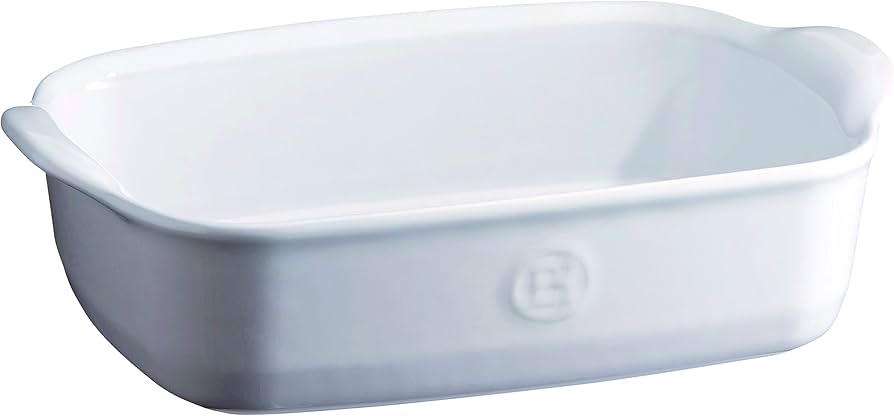Alright, let me tell you about this Emile Henry casserole dish I got my hands on. I’ve been cooking for years, seen all sorts of pots and pans, and honestly, I wasn’t sure if these fancy-looking things were all hype or actually delivered. My old casserole, bless its heart, was on its last legs – chipped, stained, and cooked unevenly. You know the type.

Getting My Hands On It
So, I decided to take the plunge. Or rather, my daughter gifted it to me for my birthday, knowing my old one was a disaster. Said, “Dad, you deserve something decent.” It arrived in a sturdy box. First thing I noticed was the weight. This wasn’t some flimsy thing. It felt substantial, you know? The color was this nice, deep red. Looked good just sitting on the counter, I’ll give it that. I tapped it; sounded solid. “Okay,” I thought, “looks the part, let’s see how it cooks.”
The First Test: A Simple Stew
I figured I’d start with something straightforward, a classic beef stew. That’s always a good test for even cooking and moisture retention. I prepped all my veggies, browned the beef, the usual. I did the browning right in the casserole on the stovetop – it handled the direct heat just fine, which was a good start. My old one would have complained, probably scorched a bit.
Then, I added everything else, popped the lid on, and slid it into the oven. The lid, by the way, fit nice and snug. Not wobbly. That felt promising. A few hours later, the aroma filling the kitchen was incredible. When I lifted the lid, the steam billowed out, and the stew looked perfect. The meat was tender, veggies soft but not mushy, and the sauce hadn’t dried out at all. That was a big win compared to my old pot, which always seemed to let too much moisture escape.
More Culinary Adventures
Since that first stew, I’ve put this casserole through its paces. Here’s a rundown of what I’ve thrown at it:
- Roast Chicken: Came out beautifully browned and juicy. The dish retained heat so well that the chicken stayed warm on the table for a good while.
- Baked Macaroni and Cheese: Got a lovely crispy top, and the cheese didn’t stick to the sides like glue. That was a pleasant surprise.
- No-Knead Bread: This was a revelation! Used it like a Dutch oven. The crust on the bread was amazing – crispy, crackly, just like from a bakery. The even heat distribution really did its job here.
- Lasagna: Cooked evenly all the way through, no burnt edges or cold spots in the middle.
Each time, the results were consistently good. It just seems to cook things… better. More evenly, holds the heat for ages. If I have one tiny niggle, it’s that it’s a bit heavy, especially when full. So, getting it in and out of a hot oven needs a bit of care. But that’s also what makes it cook so well, I suppose.
The Clean-Up
Now, the part everyone dreads: cleaning. I gotta say, it’s surprisingly easy. Even after that mac and cheese, or something a bit baked on, a good soak and most stuff just wipes away. The glaze on it is pretty slick. My old pot? I’d be scrubbing for ages. This Emile Henry thing, much less elbow grease required. I just use a regular sponge and dish soap. No special treatment needed, which I appreciate.
So, Am I A Convert?
You bet I am. I went from being a bit skeptical about “fancy cookware” to really understanding why people invest in good pieces. This casserole dish isn’t just a pretty face. It actually makes a difference in the food I cook. Things are more evenly cooked, stay moist, and honestly, it just makes cooking a bit more enjoyable when you know your gear isn’t going to let you down.

It’s not just about the food itself, but the whole process. It feels good to use quality tools. I still use my other pots and pans for different things, of course. But for those slow-cooked meals, the roasts, the bakes that need that consistent, gentle heat? This Emile Henry is my go-to. It’s become a real workhorse in my kitchen. If you’re on the fence, and you do a fair bit of this kind of cooking, I’d say it’s definitely worth considering. It’s one of those things that, once you have it, you wonder how you managed without it. Or at least, how you put up with subpar results for so long!





